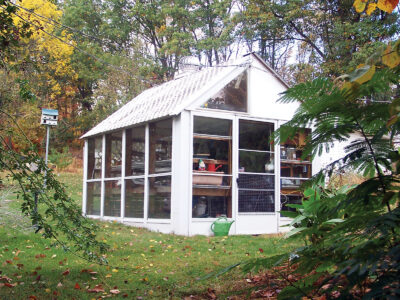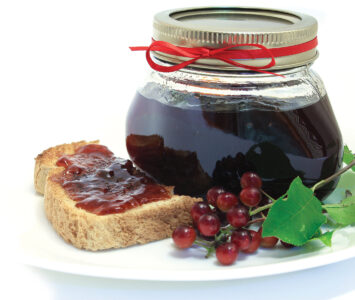With an assortment of recycled materials, you can use these low-cost DIY greenhouse ideas to serve double-duty as home heating, guesthouse, and more.
On a blustery winter day, what could be better than spending time picking fresh greens in a warm backyard greenhouse? Greenhouses can be used for more than starting seedlings. With the right design and proper management, your entire greenhouse can easily produce food year-round. (See Expert Advice for Greenhouse Growing.)
And a “greenhouse” can easily serve multiple purposes. If you want your greenhouse to double as a workshop or studio, include large roof overhangs on the south side to shade the windows in summer (or cover glass areas with heavy shade cloth panels).
Need a guesthouse from time to time? Make your building taller and install a sleeping loft. (See Build a Greenhouse: The Amazing, Low-cost, Multipurpose, Solar-heated Greenhouse/Guesthouse.)
Low-Cost DIY Greenhouse Ideas
The key to making a DIY greenhouse affordable is working with recycled windows and/or glass doors. Thousands of these items are thrown away each year as homeowners remodel. Locate your glass first, then design your greenhouse structure around it. Most communities have a few salvage yards that handle windows, or you can call companies that install new windows. They’re likely to have a supply of cheap — or even free — windows, being single pane windows, antique windows, or even double pane windows.
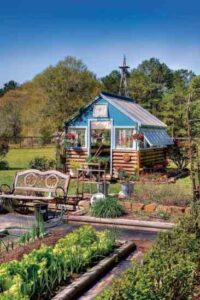
To find salvaged Construction Materials in your area, check auctions, garage sales, freecycle.org, craigslist.com or a Habitat ReStore.
We hope this collection of beautiful greenhouse ideas will inspire you to design and build your own quality greenhouse.
A Classy Greenhouse from Recycled Windows
I start almost all my vegetables from seeds and propagate roses and other ornamentals from cuttings. My yard is full of plants that came from other plants. I am a Texas Master Gardener, as is my wife, Loraine. I’m also certified as a plant propagation specialist by Texas A&M University, and I teach propagation at the extension office in Houston.
I built this amazing project greenhouse myself, from recycled windows and doors. It took me four months to construct it.
Most of the windows were recycled from the Peach Tree Bed and Breakfast in Fredericksburg, Texas. The other windows came from a friend who remodeled his home. I decided to wait to design the greenhouse until after I had purchased all the windows and doors so that I could design around the dimensions of the materials.
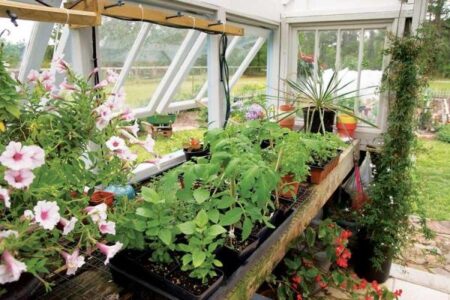
The foundation slab allows water to drain through the center and into the flower beds that surround the greenhouse. The plants are watered by misters or drip irrigators controlled by a timer. I heat the greenhouse if the temperature gets below 45 degrees Fahrenheit. During the summer, I open the windows for ventilation. — Brian Koehl
A Gift Greenhouse
It all started with an ugly aluminum shed with broken doors — an antique eyesore from our friend Ed Hannity’s childhood days. Now that Ed is 58 years old, it was time for a new, improved structure — a greenhouse for gardening and a workshop to call his own.
Ed’s time is consumed by his job and doing things for other people. My husband, Bob, and I are home designers, so we decided to build a cold weather greenhouse for Ed hoping to surprise him. We built the structure at our house, disassembled it, and delivered it on a car trailer to Ed’s house.
We used recycled materials as much as possible, and found many roofing materials online at low cost or for free. After friends and relatives learned what we were planning, it seemed everyone had some sort of building material they were thrilled to get rid of.
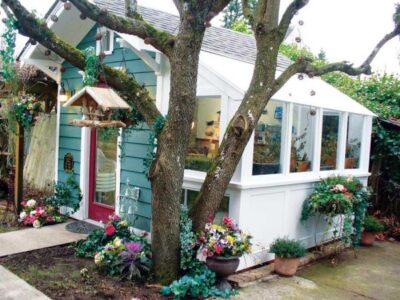
The workbench counter is made from a solid-core door. Driving home one night, we spotted a stack of short 2-by-4s. We beveled the edges for the potting bench and lower shelf. Bob even had various nails and Deck Screws left over from past projects.
The toolshed area keeps everything in order and within reach. The greenhouse portion and potting bench create a great space to nurture new plants and to overwinter hanging baskets. It’s convenient, and a pleasant place to spend time. We also saved many materials from ending up in the landfill. — Robin Anderson
You can purchase a detailed plan of this greenhouse kit.
An Efficient Lean-to Greenhouse
We wanted a greenhouse to extend our growing season, but never felt we could justify the use of electricity for winter growing. Now that we have constructed a lean-to greenhouse, we feel we have the best of both worlds.
Lean-to cold weather greenhouses make use of the insulated wall of an existing building. Because we’re at 40 degrees latitude in Ohio, the 60-degree slant of the south-facing wall allows the low winter sun to pass directly through the tempered, insulated glass and bounce off the white interior walls. This results in maximum light and warmth for the plants. Allowing sunlight to reach the back wall is an important consideration in lean-to greenhouse goals design.

December and January are the cloudiest months in Ohio, and it’s important to store any heat the sun provides during this time. Water-filled plastic jugs, painted black, are lined up along the back wall to absorb heat during the day and release it at night. Two 50-gallon water-filled barrels, also painted black, absorb and release heat over a longer period of time.
Air movement is essential in any greenhouse. We rely mainly on air currents provided by screened windows with automatic roof vents or automatic openers.
A sunny, typical winter temperatures day in the teens will heat the greenhouse into the 80s by mid-morning. The heat-retaining containers cushion the cold night temperatures. If nights dip below freezing, cold-tolerant plants still thrive. We can start seedlings in February, protect Summer greenhouse plants like melons and zucchini from vine-borers in the summer, and continue growing tomatoes into late autumn.
We enjoy being able to extend our growing season without increasing our energy use. — Mary Lou Shaw
DIY Greenhouse FAQ and Tips
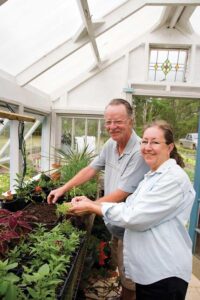
- Best location? South-facing with full sun and good drainage. Ensure it gets at least 6 hours of direct sun in winter.
- Need a foundation? Optional, but gravel, wood, or concrete improves drainage and stability. Wood floor designs are popular among backyard gardeners for cold climates.
- Use Recycled or Budget Materials: Old windows, sliding glass doors, and PVC pipes make affordable, effective frames. Consider material in terms of cost of materials and local availability.
- What to grow? Veggies, herbs, and small fruit trees–year-round with temp control.
- Plan for Ventilation: Add automatic roof vents or use a fan to prevent overheating and mold buildup.
- Control temperature? Use vents, shade cloth panels, fans, insulation, or solar power-based heating.
- Use UV-Resistant Plastic: Opt for poly greenhouse film rated for 4+ years of use to avoid frequent replacements.
- Is DIY worth it? Yes–cheaper, flexible, and great for extended growing. Even a basic greenhouse frame can support a challenging project that becomes a lasting comfort level upgrade.
- Advice on greenhouse building: Start with a plan, evaluate water proof needs, access to water, and roof with glass panels or alternative insulated panels depending on your climate.
- Tip: Greenhouses using an aluminum frame may perform better in wet winters, while wood frames may insulate better in winter dry regions.
For more creative ideas for building your own greenhouse from recycled materials, check out these articles:
How to Build a Greenhouse from Used Windows or Storm Doors
A Small Greenhouse from a Bus Stop Shelter
Build a Greenhouse: The Amazing, Low-cost, Multipurpose, Solar-heated Greenhouse/Guesthouse
Originally published as “DIY, Low-cost and Multipurpose Greenhouses” in the October/November 2009 issue of MOTHER EARTH NEWS.

